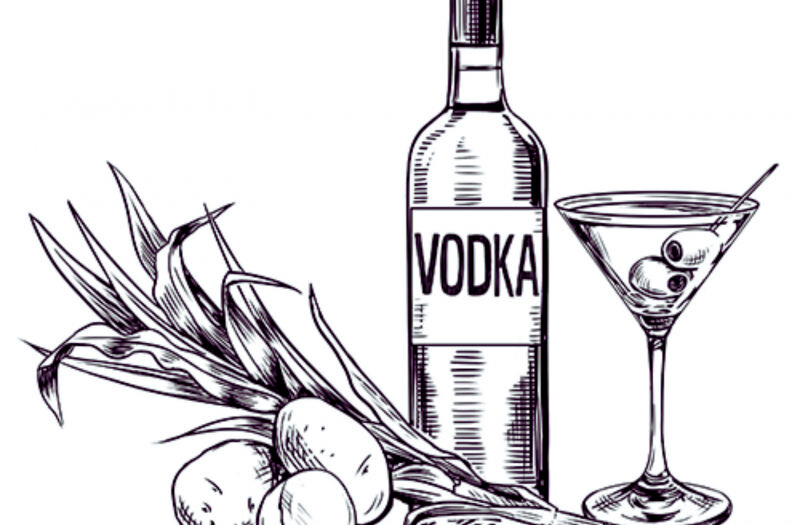Introduction: The Art and Science Behind Vodka Production
Vodka, often hailed as the elixir of life, is a timeless spirit that has intrigued and delighted enthusiasts for centuries. In this comprehensive guide, we will delve into the fascinating world of vodka production, exploring the meticulous process that transforms humble ingredients into the crystal-clear liquid that graces our glasses.
What is Vodka?

Vodka is a popular distilled alcoholic beverage that originates from Eastern Europe and Russia. It is typically made through the fermentation of grains, potatoes, or sometimes fruits, and then distilled to increase its alcohol content. The distillate is then diluted with water to reach the desired alcohol strength, usually around 40% alcohol by volume (ABV).
Vodka is known for its neutral flavor profile, which means it lacks a distinctive taste or aroma. This neutrality makes it a versatile spirit that can be used as a base for a wide variety of cocktails. Vodka can also be consumed neat (without any mixers) or on the rocks (poured over ice). It is often enjoyed in social settings and is a key ingredient in popular cocktails like the Martini, Bloody Mary, and Moscow Mule.
1. Origins of Vodka: A Historical Perspective

Vodka, often regarded as the quintessential Russian spirit, has a rich and intriguing history that spans centuries. Its exact origins are shrouded in mystery, with several countries, including Russia, Poland, and Sweden, laying claim to its invention. The word “vodka” itself is derived from the Slavic word “voda,” which means “water,” suggesting its importance as a life-giving elixir.
The Early Days: Vodka’s Humble Beginnings
Historians believe that the production of vodka dates back to the 9th century in Eastern Europe, where it was initially used for medicinal purposes. The spirit was made through the distillation of fermented grains and later evolved to include other ingredients like potatoes.
Russia: The Land of Vodka
Russia, often synonymous with vodka, played a significant role in popularizing the spirit. By the 14th century, vodka had become an integral part of Russian culture and social gatherings. Distilleries were established, and methods for producing high-quality vodka were refined, setting the stage for its global prominence.
Poland: Vodka’s European Connection
Poland also claims a deep-rooted connection to vodka, with references to the spirit dating back to the 8th century. Polish vodka, known as “wódka,” gained recognition for its purity and smoothness. The Polish nobility embraced vodka, leading to its widespread acceptance and eventual export to other European countries.
Sweden: The Birthplace of Absolute Vodka
In Sweden, vodka production has a long history, with the creation of renowned brands like Absolut Vodka. Swedish vodka differs in its production process, emphasizing continuous distillation and meticulous craftsmanship. This approach has contributed to Sweden’s reputation for producing high-quality vodka.
Modern Era: Vodka Goes Global
In the modern era, vodka has transcended its regional origins and become a global phenomenon. Distilleries around the world produce a diverse range of vodkas, each with unique characteristics influenced by local ingredients and traditions. Vodka cocktails have also gained immense popularity, showcasing the spirit’s versatility and adaptability.
2. Ingredients: The Foundation of Flavor
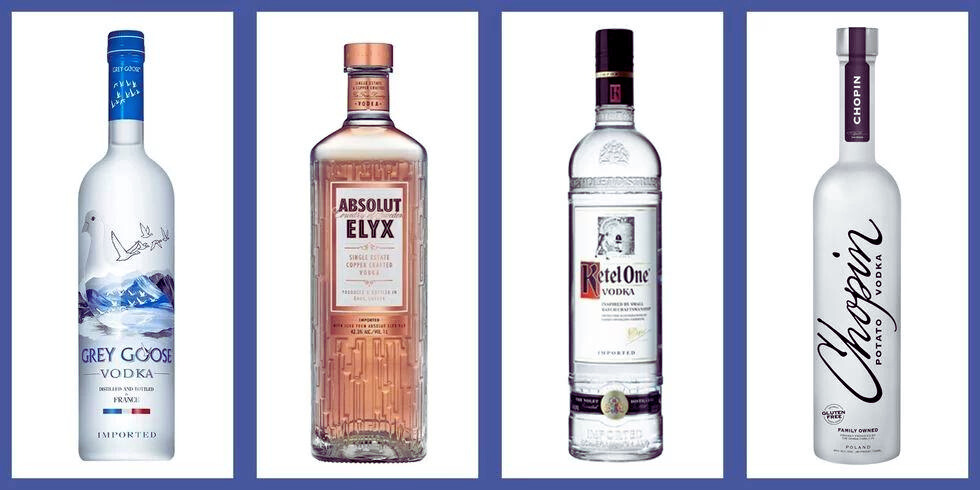
At the heart of every exceptional vodka lies a carefully curated selection of ingredients, each contributing to the spirit’s distinct taste and character. Understanding these fundamental components is essential in appreciating the nuanced flavors found in different vodkas.
Grains: The Traditional Choice
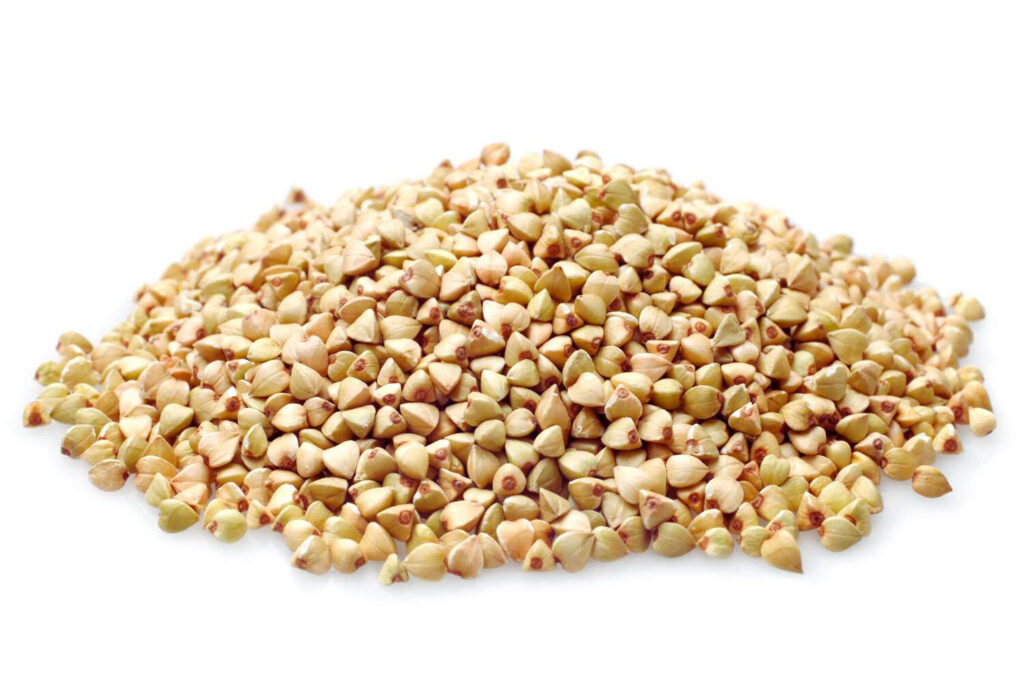
Traditionally, grains such as wheat, rye, barley, and corn have been the primary sources of starch for vodka production. Each grain imparts unique qualities; wheat delivers a soft and mellow sweetness, rye offers a spicy and robust flavor, barley contributes a subtle nuttiness, and corn provides a mild sweetness. Distillers often choose specific grains to craft vodkas with specific taste profiles, catering to diverse palates.
Potatoes: A Hearty Alternative
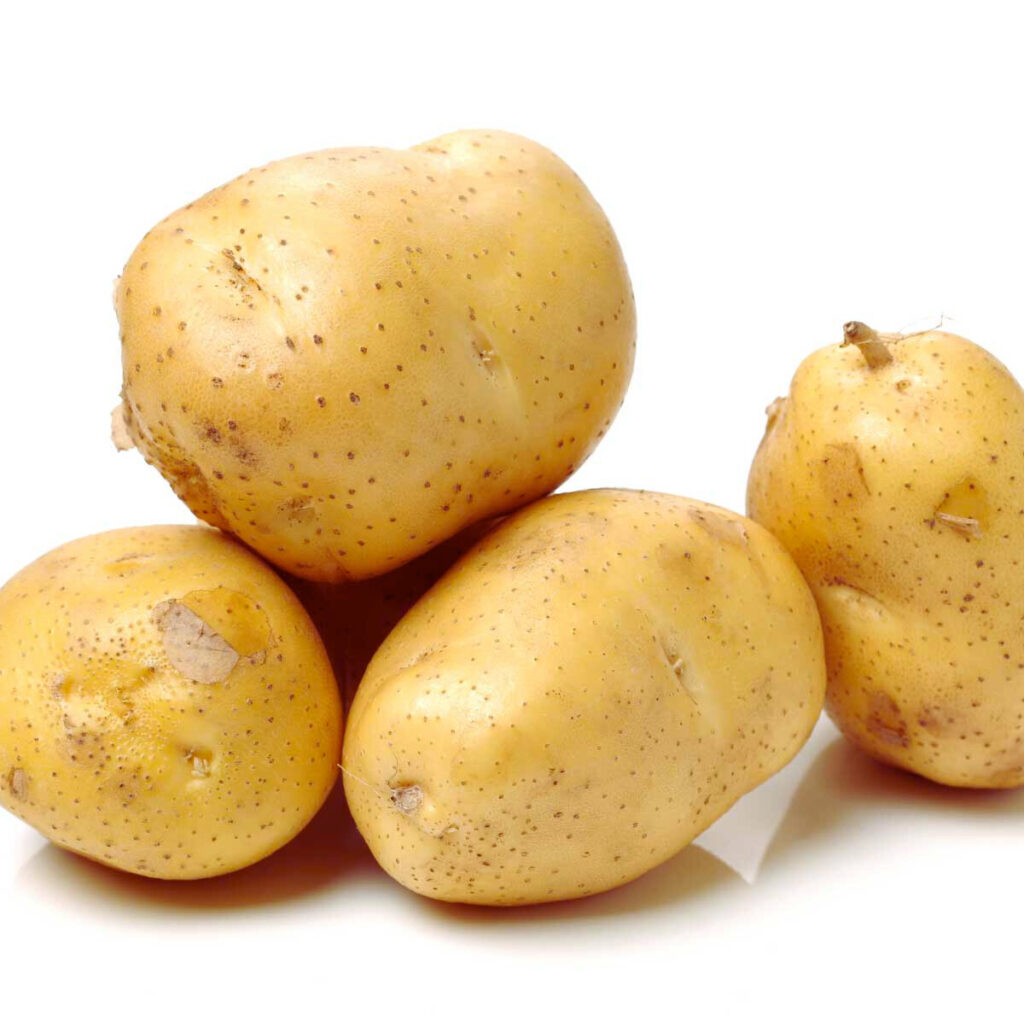
Potatoes, a staple crop in many regions, serve as an alternative source of starch for vodka production. Potato vodka is renowned for its creamy texture and earthy, slightly sweet flavor. This ingredient choice is especially popular in regions where grains are scarce, adding diversity to the world of vodka.
Water: The Elixir of Purity

Pure, clean water is crucial in vodka production, constituting a significant portion of the final product. Natural spring water or water purified through advanced filtration systems ensures the vodka’s smoothness and clarity. The mineral content and source of the water influence the mouthfeel, subtly enhancing the overall drinking experience.
Yeast: Nature’s Alchemist
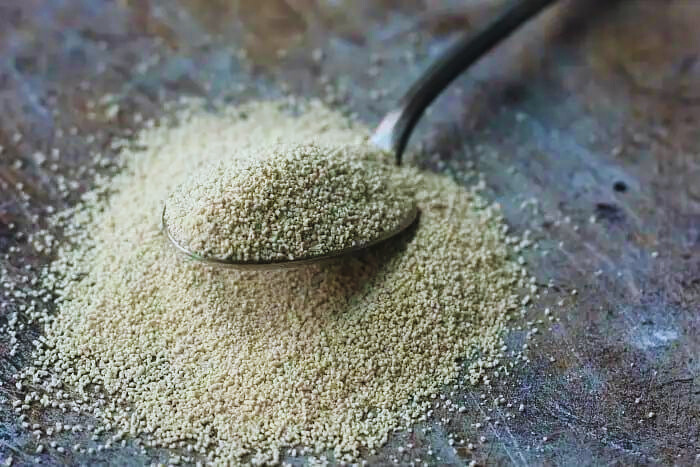
Yeast is the unsung hero of vodka production. During fermentation, yeast consumes the sugars present in the grains or potatoes, converting them into alcohol and carbon dioxide. The choice of yeast strain and fermentation duration profoundly impacts the vodka’s aroma and flavor. Distillers meticulously select yeast varieties to achieve the desired taste characteristics, ensuring consistency in each batch.
Additional Flavors: Exploring Creativity

While traditional vodka is known for its neutral flavor, some distillers choose to infuse their creations with additional flavors. Fruits, herbs, spices, and botanicals are often used to impart unique and complex notes to the spirit. Citrus fruits add a refreshing zest, while herbs like basil or thyme contribute a subtle herbal aroma. These infused vodkas cater to adventurous palates, offering a delightful departure from the classic vodka experience.
Quality Control: Crafting Perfection
Master distillers meticulously select and source the finest ingredients, ensuring their quality and authenticity. Regular testing and quality control measures guarantee that only the best grains, potatoes, water, and yeast are used in the production process. This commitment to excellence is what distinguishes premium vodkas, resulting in a smooth, refined, and enjoyable drinking experience.
In the realm of vodka, the artistry lies not just in distillation but also in the careful selection and harmonious blending of these foundational ingredients. Each element contributes a unique essence, transforming a simple raw material into a sophisticated spirit worthy of savoring. As you raise your glass, remember the meticulous craftsmanship that goes into the creation of this timeless elixir, celebrating the diverse flavors born from the perfect union of grains, potatoes, water, and yeast.
3. Mashing and Fermentation: Transforming Starch into Alcohol
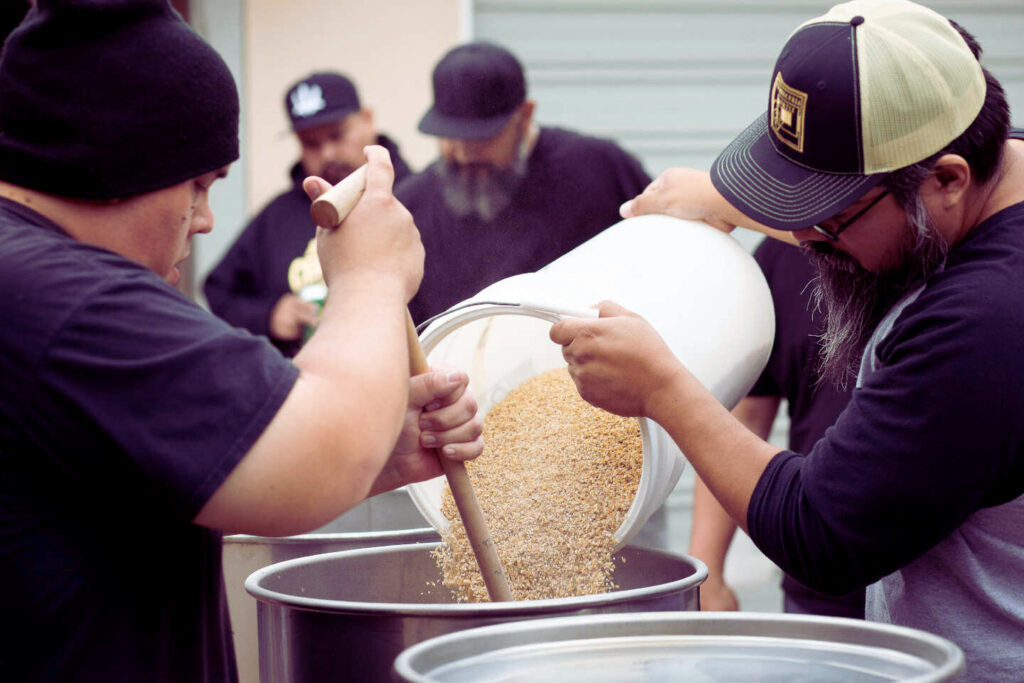
The journey of crafting vodka is a meticulous process that involves transforming starchy raw materials into alcohol. This magical transformation takes place in two essential stages: mashing and fermentation.
Mashing: Unlocking the Starch
The mashing process is the first step towards vodka production. In this stage, the chosen grains or potatoes are ground into a fine consistency, creating a mash that resembles porridge. This mash is then heated to release the starches within. The heat activates enzymes present in the grains or added separately, breaking down the starches into fermentable sugars.
Fermentation: Nature’s Alchemy
After mashing, the resulting mash is transferred to fermentation tanks. Yeast, a microorganism that plays a pivotal role, is introduced to the mash. The yeast consumes the sugars derived from the grains or potatoes, and as a natural byproduct, it produces alcohol and carbon dioxide. This fermentation process typically takes several days, and it is closely monitored to ensure the desired alcohol content is reached.
The Importance of Yeast Selection
The choice of yeast strain is a critical aspect of vodka production. Different yeast varieties can impart distinct aroma and flavor characteristics to the final product. Master distillers often experiment with various yeast strains to craft vodkas with specific taste profiles, ranging from fruity and floral to spicy and robust.
Fermentation Duration
The duration of fermentation also influences the vodka’s flavor. A longer fermentation period may yield a more complex and aromatic spirit, while a shorter fermentation may result in a cleaner and more neutral taste. This delicate balance is carefully controlled to achieve the desired outcome.
Quality Control: Precision in Every Batch
Quality control is paramount during mashing and fermentation. Each batch is closely monitored to ensure that the fermentation process proceeds as intended. Any irregularities can affect the final product’s aroma, flavor, and alcohol content. Consistency in fermentation is a hallmark of high-quality vodka production.
The Transformation Complete
By the end of the fermentation process, the once starchy grains or potatoes have been transformed into a liquid with a substantial alcohol content. This liquid is the basis for the next crucial steps in vodka production, which involve distillation, filtration, and flavor infusion.
Mashing and fermentation represent the initial stages where nature’s alchemy transforms simple raw materials into a liquid brimming with potential. The resulting liquid, rich in alcohol and the essence of the chosen ingredients, serves as the canvas for the artistry of distillation and flavor infusion, further enhancing the unique character of each vodka.
4. Distillation: The Art of Purification
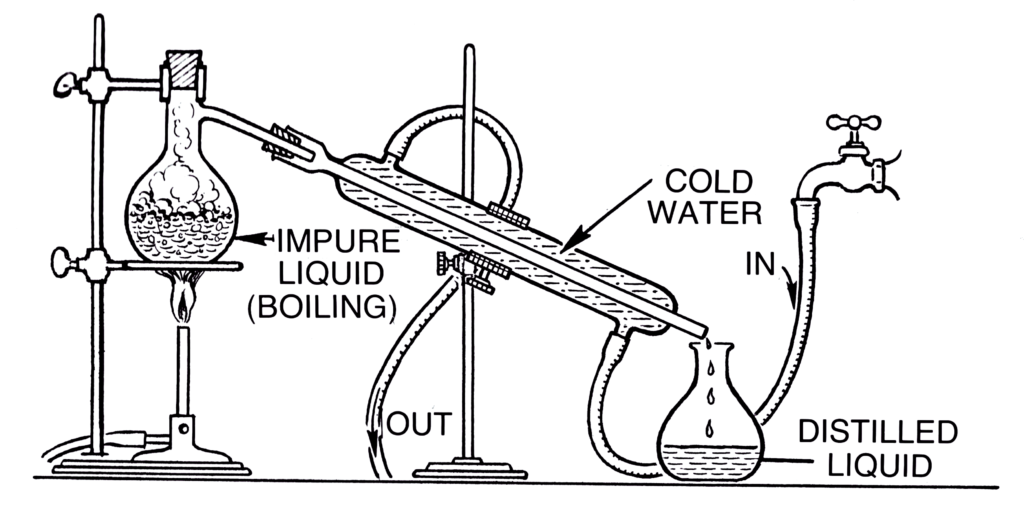
Distillation stands as a cornerstone in the craft of vodka-making, elevating the raw fermented liquid to the crystal-clear spirit cherished by enthusiasts worldwide. This meticulous process involves the art of purification, where the liquid is carefully heated and condensed to enhance its purity and alcohol content.
Understanding the Distillation Process
Distillation begins by heating the fermented liquid in a still, a specialized apparatus designed for this purpose. As the liquid reaches its boiling point, the alcohol evaporates, separating from the water and other impurities present in the mixture. This vaporized alcohol rises through the still and enters a cooling system, where it is condensed back into liquid form.
Distillation Columns: Precision in Purification
Many modern distilleries employ advanced distillation columns, which consist of multiple plates or trays. These columns provide an extended surface area for the vapor to condense and re-evaporate, ensuring a thorough purification process. Each re-condensation enhances the alcohol’s purity, resulting in a smoother and more refined spirit.
Pot Stills vs. Continuous Stills: Tradition Meets Efficiency
Traditionally, vodka was distilled using pot stills, which offer a more hands-on approach and allow distillers to retain specific flavor characteristics from the raw ingredients. In contrast, continuous stills, commonly used in large-scale commercial distilleries, provide a more efficient and consistent distillation process. Distillers carefully choose the type of still based on the desired vodka style, balancing tradition with efficiency.
Heads, Hearts, and Tails: Separating the Fractions
During distillation, the distiller separates the alcohol into three main fractions: heads, hearts, and tails. The heads contain undesirable compounds and impurities, the hearts consist of the purest alcohol, and the tails contain heavier elements and fusel oils. The distiller meticulously monitors the process, discarding the heads and tails to retain only the high-quality hearts, ensuring the final vodka is exceptionally pure and smooth.
Multiple Distillations: Enhancing Purity
Some premium vodkas undergo multiple distillations to achieve an unparalleled level of purity. Each distillation round further refines the spirit, removing any remaining impurities and undesirable flavors. This dedication to perfection is a hallmark of exceptional vodka craftsmanship.
The Final Product: Pure Elegance in a Bottle
After the distillation process is complete, the resulting liquid, often referred to as “new make spirit,” boasts a significantly higher alcohol content and remarkable clarity. This spirit serves as the foundation for the next steps in vodka production, including filtration and flavor infusion, ultimately giving rise to the diverse array of vodkas enjoyed by connoisseurs around the world.
Distillation, with its delicate balance of tradition, science, and artistry, transforms the raw fermented liquid into a spirit of exceptional quality and purity. Each distiller’s expertise and dedication to the craft shine through in the final product, offering enthusiasts a taste of the meticulous care and passion that goes into creating the perfect vodka.
5. Filtration: Achieving Crystal-Clear Perfection
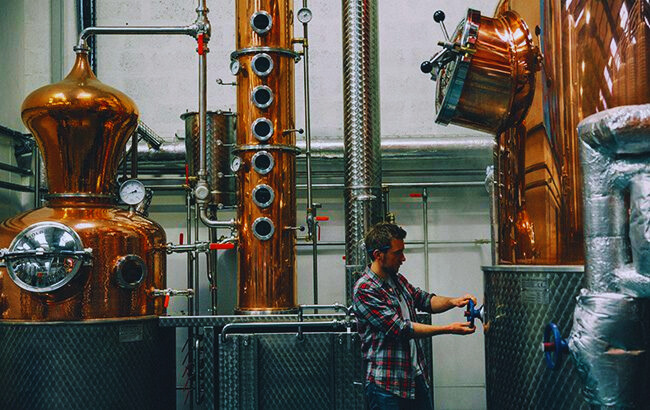
Filtration stands as the silent hero in the world of vodka production, refining the distilled spirit to achieve unparalleled clarity, purity, and smoothness. This meticulous process, often overlooked by the casual observer, plays a pivotal role in shaping the vodka’s character and elevating it to a level of crystal-clear perfection.
Activated Charcoal: Nature’s Filter
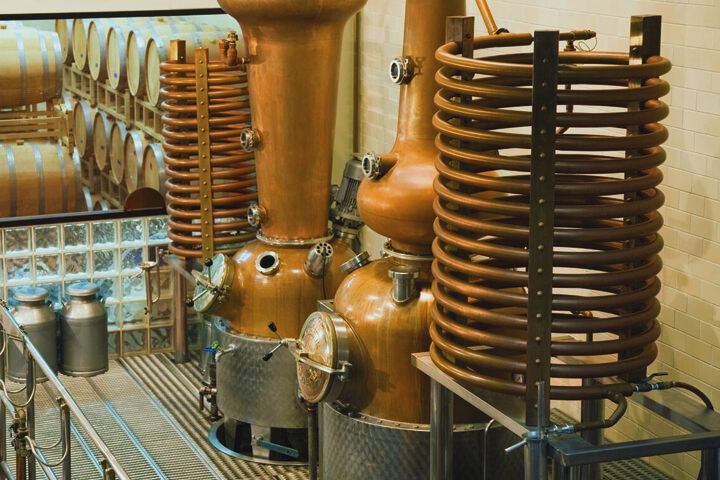
One of the most common filtration methods involves the use of activated charcoal, a form of carbon with an exceptionally porous structure. As the vodka passes through layers of activated charcoal, impurities, and unwanted compounds are absorbed, leaving behind a liquid of remarkable purity. This process not only removes unwanted flavors and odors but also enhances the vodka’s smoothness.
Quartz Crystals: A Touch of Elegance
Some distillers take filtration to a higher level of sophistication by incorporating quartz crystals into the process. Quartz, renowned for its purity and clarity, acts as a natural filter, further refining the vodka and imparting a subtle energy to the spirit. This additional step ensures that the vodka achieves a level of smoothness and clarity that is nothing short of exceptional.
Silver and Gold Filtration: The Ultimate Luxury
For vodkas destined for the highest echelons of luxury, filtration through silver or gold is employed. These precious metals not only add a touch of opulence but also possess natural antibacterial properties. As the vodka passes through silver or gold filters, any remaining impurities are neutralized, resulting in a vodka of unparalleled purity and elegance.
Diamond Filtration: A Rare Brilliance
At the pinnacle of luxury vodka production, some distillers go a step further by utilizing diamond filtration. Diamonds, with their unmatched hardness and purity, provide an exquisite touch to the filtration process. As the vodka passes through layers of crushed diamonds, it undergoes an extraordinary transformation, emerging with a rare brilliance and a level of smoothness that is truly exceptional.
The Art of Balance: Preserving Character
While extensive filtration ensures purity, skilled distillers strike a delicate balance. They aim to remove impurities while preserving the vodka’s unique character and subtle flavors. This artful approach ensures that the final product is not just crystal clear but also possesses a depth of flavor that reflects the quality of the raw ingredients and the craftsmanship involved.
The Result: Liquid Elegance in Every Sip
The meticulous filtration process culminates in a vodka of unparalleled quality. With each sip, enthusiasts experience the culmination of nature’s purity, the distiller’s expertise, and the refined elegance achieved through meticulous filtration. This liquid elegance, encased in a bottle, represents the epitome of vodka craftsmanship, inviting connoisseurs to indulge in a sensory journey of clarity, smoothness, and perfection.
6. Flavor Infusion: From Classic to Creative
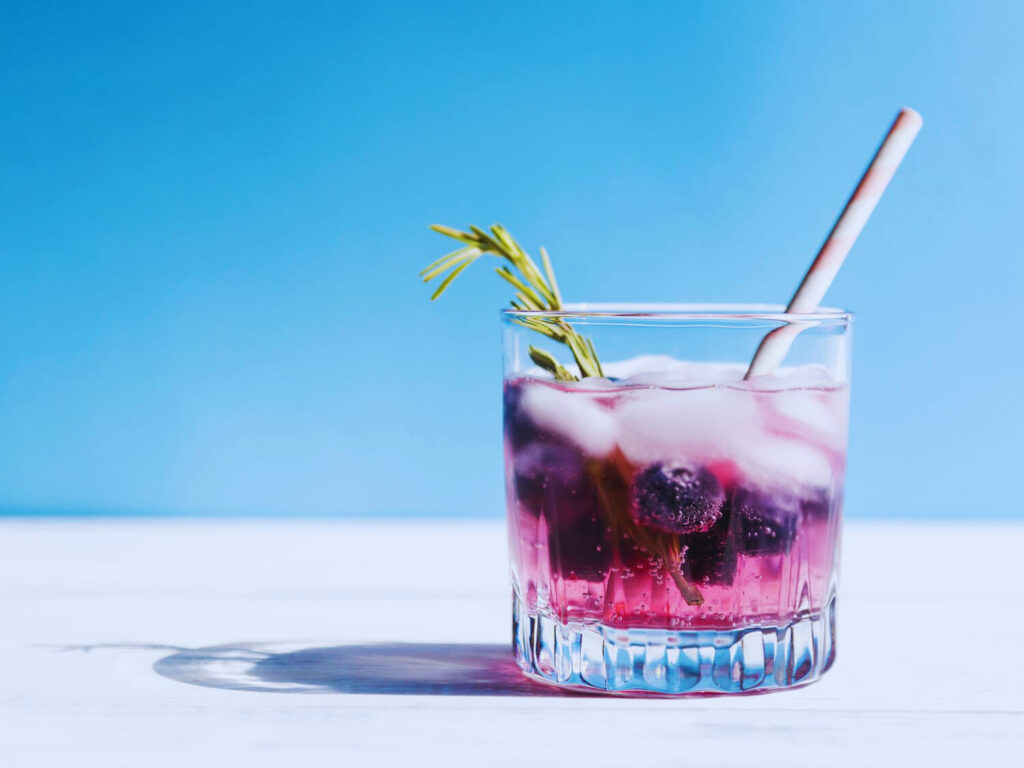
While traditional vodka is celebrated for its neutral taste, the world of vodka has expanded to include a diverse array of flavored variants, offering enthusiasts a captivating spectrum of options. From classic and timeless infusions to bold and creative blends, flavor infusion has become an art form, adding depth and excitement to the vodka experience.
Classic Infusions: Timeless Elegance
Classic vodka infusions involve the addition of natural ingredients like fruits, herbs, and spices. Citrus fruits such as lemon, lime, and orange are popular choices, imparting a refreshing zest to the spirit. Herbs like basil and mint add a subtle herbal aroma, enhancing the complexity of the vodka. These classic infusions provide a delightful twist while retaining the vodka’s inherent purity.
Fruit Infusions: Vibrant and Luscious
Fruit-infused vodkas have gained widespread popularity for their vibrant flavors. Berries, apples, and pears are commonly used, infusing the vodka with their natural sweetness and a burst of fruity notes. These infusions offer a luscious and succulent experience, making them a favorite choice for both casual drinkers and mixologists crafting inventive cocktails.
Spice and Herb Infusions: Aromatic Complexity
Spices and herbs add a layer of aromatic complexity to vodka, transforming it into a sensory delight. Infusions with spices like cinnamon, ginger, or cloves evoke warmth and richness, making them ideal for sipping on chilly evenings. Herbs such as rosemary and thyme introduce earthy undertones, elevating the vodka’s profile and making it a versatile choice for various cocktails.
Creative Blends: Pushing Boundaries
In recent years, distillers have embraced creativity by experimenting with unconventional ingredients. From exotic fruits like lychee and passionfruit to unconventional spices like cardamom and chili, these innovative blends push the boundaries of flavor infusion. The result is a diverse range of vodkas that cater to adventurous palates, offering a unique and unforgettable tasting experience.
Natural Extraction: Preserving Authenticity
Artisanal vodka producers often employ natural extraction methods to preserve the authenticity of the infused ingredients. Cold maceration, where the ingredients are steeped in vodka at low temperatures, allows for a gradual extraction of flavors without compromising their delicate nuances. This gentle process ensures that the final product retains the true essence of the infused elements.
Balance and Harmony: Craftsmanship in Every Bottle
Crafting infused vodka is an art of balance and harmony. Distillers carefully select ingredients, considering their compatibility and complementary qualities. Achieving the perfect blend requires precise measurements and a keen understanding of flavors, ensuring that no single element overwhelms the palate. The result is a harmonious fusion of vodka and infused ingredients, delivering a sensory experience that captivates the senses.
From the elegance of classic infusions to the boldness of creative blends, flavored vodkas have redefined the spirit, offering a diverse and exciting range of choices for enthusiasts. Each sip is a journey through a symphony of flavors, a testament to the endless possibilities of vodka infusion and the creative spirit of those who craft these extraordinary blends.
7. Bottling and Packaging: Craftsmanship Beyond the Liquid
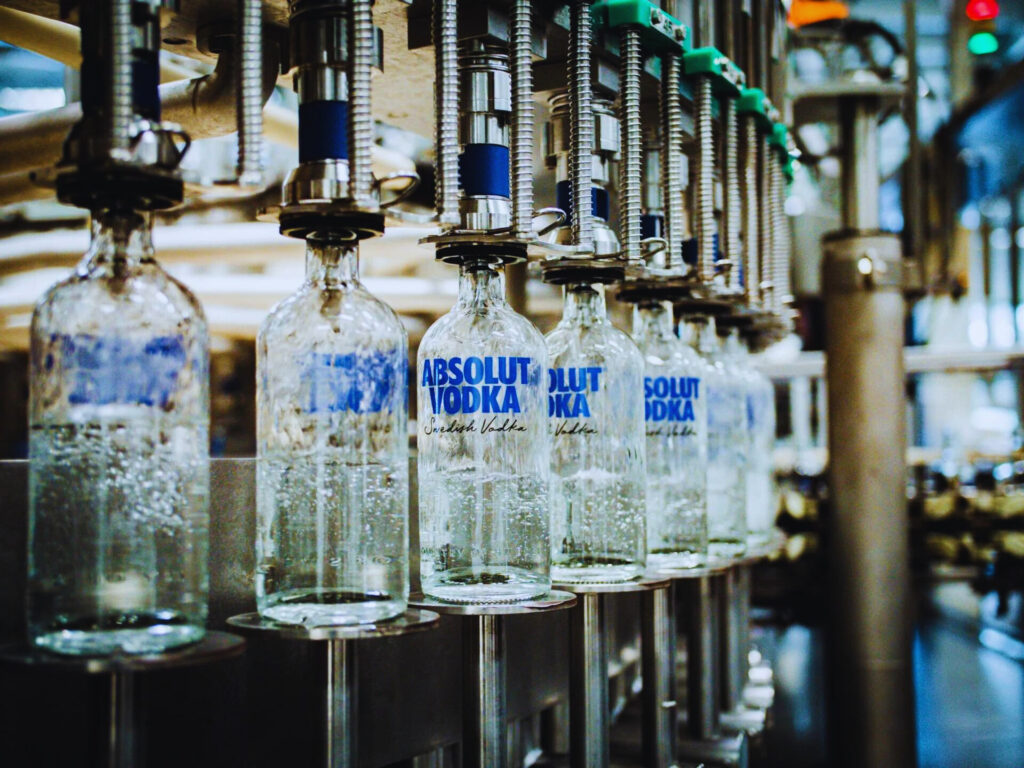
The art of vodka extends far beyond its exquisite taste; it encompasses the meticulous craftsmanship involved in bottling and packaging. Every element, from the design of the bottle to the labeling and packaging, is a testament to the distiller’s dedication to presenting the spirit in a manner that is as elegant and refined as its contents.
Elegant Glass Bottles: A Showcase of Sophistication
Vodka bottles come in various shapes and sizes, each meticulously designed to reflect the brand’s identity and the spirit’s essence. Clear glass bottles are the most common choice, allowing the vodka’s crystal-clear purity to shine through. The elegance of the bottle’s silhouette, from slender and tall to stout and robust, adds to the visual appeal, making it a work of art on its own.
Innovative Labels: Telling a Story
Labels play a crucial role in communicating the vodka’s story and heritage. Distillers invest in innovative label designs that convey the brand’s personality and history. Intricate graphics, embossed details, and gold foiling are often employed to create a sense of luxury and sophistication. The label’s color palette and typography are carefully chosen to evoke the spirit’s character, enticing consumers with a glimpse of the experience within.
Security Seals and Certifications: Ensuring Authenticity
To guarantee the vodka’s authenticity, distillers often incorporate security seals and certifications. Tamper-evident seals and unique identification codes provide consumers with assurance that the bottle has not been opened or tampered with. Certifications, such as quality marks and awards, further validate the vodka’s exceptional quality and craftsmanship, instilling confidence in the discerning buyer.
Innovative Closures: Sealing Perfection
The closure, whether it’s a cork, screw cap, or unique custom-designed stopper, is more than a functional element; it’s a finishing touch that enhances the overall packaging. Distillers may opt for natural cork for a traditional feel or modern screw caps for convenience. Some luxury vodkas feature custom-designed closures made from materials like crystal or metal, adding an extra layer of opulence to the packaging.
Packaging Excellence: Unwrapping an Experience
Beyond the bottle itself, the packaging is an integral part of the vodka experience. Distilleries invest in sturdy and aesthetically pleasing boxes or tubes that cradle the bottle, ensuring its safe transportation and presentation. Luxurious packaging materials, such as velvet-lined boxes or satin pouches, elevate the unboxing experience, inviting consumers into a world of indulgence and sophistication.
Sustainability: A Growing Focus
In recent years, sustainability has become a key focus in vodka packaging. Distillers are increasingly opting for eco-friendly materials, recyclable glass, and biodegradable inks for labels. By embracing sustainable practices, vodka producers contribute to environmental conservation while offering consumers a guilt-free indulgence.
Bottling and packaging are not merely functional aspects of vodka production; they are an integral part of the brand’s identity and the consumer’s experience. Craftsmanship in these areas ensures that the vodka not only tastes exceptional but is also presented in a manner that resonates with the discerning consumer, making each bottle a collector’s item and every sip a luxurious journey into the world of refined spirits.
8. The Role of Vodka in Mixology: Beyond the Shot Glass
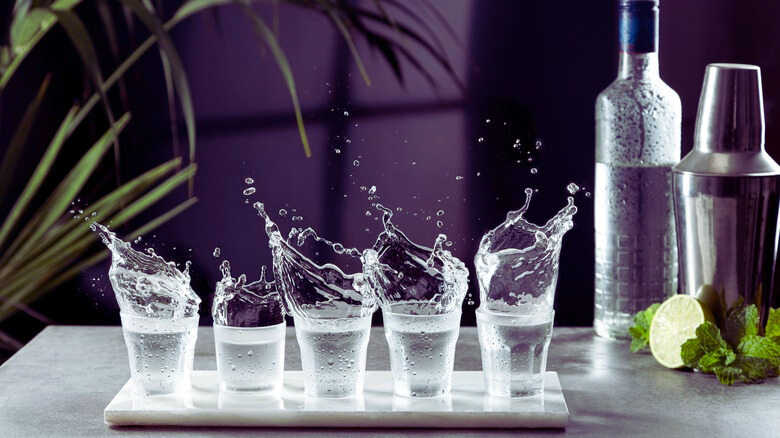
Vodka’s versatility in mixology extends far beyond its reputation as a spirit suited for quick shots. In the hands of skilled mixologists, vodka becomes a canvas for crafting a diverse range of cocktails, each with its own unique flavor profile and character. Let’s explore the pivotal role vodka plays in mixology, shaping the cocktail culture and delighting enthusiasts worldwide.
Classic Cocktails: Timeless Elegance
Vodka serves as the foundation for classic cocktails that have stood the test of time. The Martini, made with vodka instead of gin, offers a smooth and sophisticated alternative. The Moscow Mule, a refreshing blend of vodka, ginger beer, and lime juice, has become an iconic choice for those seeking a zesty kick. Vodka’s neutrality allows it to seamlessly integrate with other ingredients, creating timeless cocktails appreciated by generations.
Vodka-Based Coolers: Refreshing and Light
Vodka-based coolers, often infused with fruits or botanicals, are a popular choice for those seeking a refreshing, easy-to-drink option. These beverages are served over ice, blend vodka with various fruit juices, soda, or tonic water. With flavors ranging from citrus and berry to cucumber and mint, vodka coolers offer a light and crisp alternative, perfect for warm summer days or casual gatherings.
Craft Cocktails: Creative Innovations
In the realm of craft cocktails, mixologists experiment with unique ingredients and techniques to push the boundaries of flavor. Vodka provides a versatile base for creative innovations. Infused vodkas, made by steeping the spirit with herbs, fruits, or spices, offer a myriad of flavor options. Mixologists incorporate these infused vodkas into inventive cocktails, adding complexity and depth to the drinker’s experience.
Signature Creations: Unique to Each Venue
Bars and restaurants often feature their own signature vodka cocktails, showcasing the creativity of their bartenders. These bespoke creations can range from savory concoctions incorporating fresh herbs and vegetables to dessert-inspired delights with chocolate and coffee notes. Vodka’s adaptability allows mixologists to craft unique drinks tailored to the venue’s theme, ensuring a memorable experience for patrons.
Vodka Martinis: A World of Variations
The Vodka Martini, a classic cocktail, offers a world of variations to suit different palates. Whether it’s a traditional dry Martini, a dirty Martini with olive brine, or a fruity twist with flavored vodkas, the Vodka Martini serves as a canvas for personal expression. Each variation highlights the subtle nuances of the chosen vodka, allowing enthusiasts to explore diverse taste profiles.
Vodka and Food Pairings: Elevating Culinary Experiences
Vodka’s versatility isn’t limited to cocktails; it also plays a role in culinary experiences. Chefs and mixologists collaborate to create vodka-based sauces, marinades, and infusions that complement various dishes. The spirit’s clean and neutral profile enhances flavors without overpowering the palate, making it a favorite choice for enhancing the dining experience.
In the world of mixology, vodka’s adaptability and ability to harmonize with an array of ingredients make it an indispensable spirit. From classic cocktails to innovative creations, vodka continues to inspire bartenders and enthusiasts alike, elevating the art of mixing drinks and enhancing the joy of social gatherings. With every sip, vodka invites enthusiasts on a flavorful journey, proving that its role in mixology extends far beyond the confines of the shot glass.
9. Vodka Tasting: The Art of Appreciation
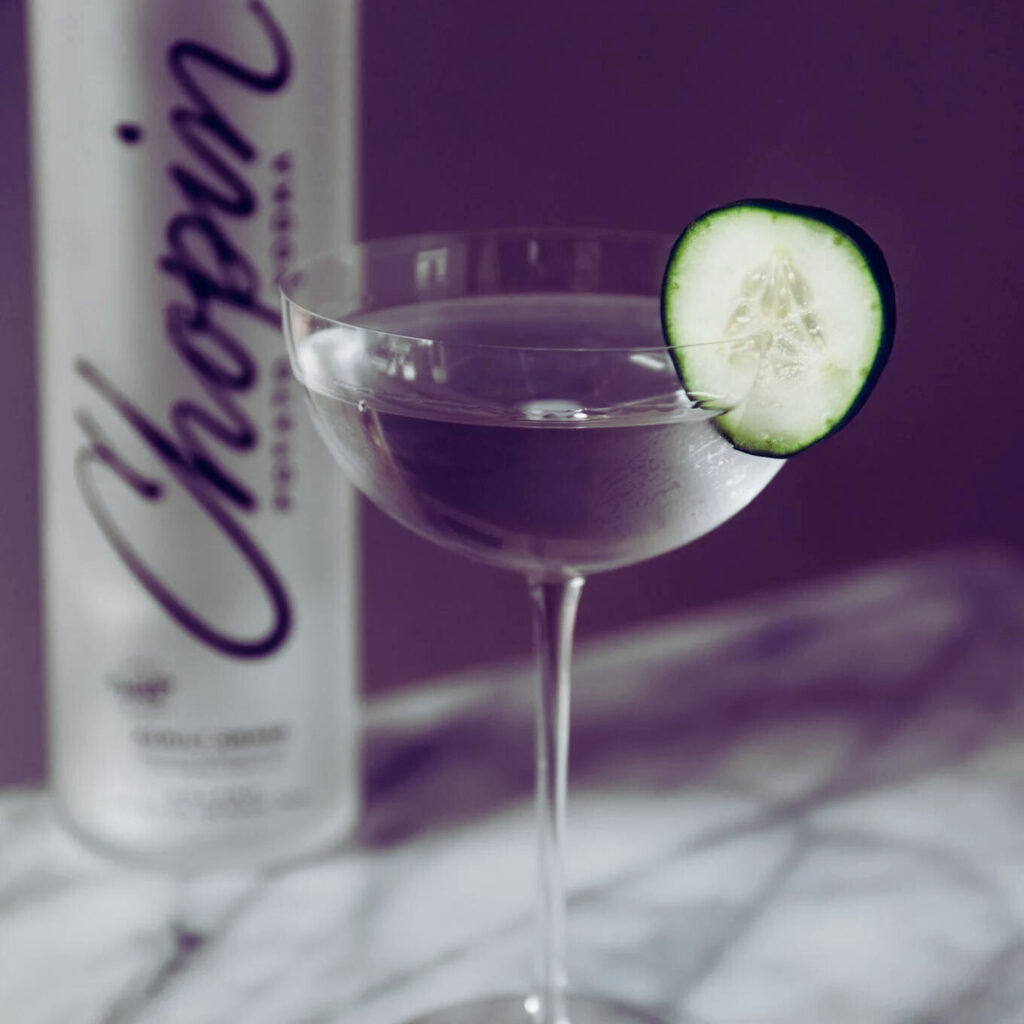
Vodka tasting, much like wine or whiskey appreciation, is a nuanced art that allows enthusiasts to explore the spirit’s subtle complexities. By engaging the senses and embracing a mindful approach, vodka tasting becomes an immersive experience, unveiling the spirit’s character and craftsmanship. Here’s a guide to mastering the art of vodka appreciation:
Selecting the Right Glassware
Begin by choosing the appropriate glassware. A tulip-shaped glass with a narrow opening concentrates the vodka’s aromas, enhancing your olfactory experience. The clear glass allows you to observe the vodka’s clarity and viscosity, providing valuable visual cues.
Observing the Appearance
Pour a moderate amount of vodka into the glass. Hold it against a white background and observe its appearance. Premium vodkas exhibit exceptional clarity and may showcase faint, silvery reflections. Note the viscosity: high-quality vodkas often cling to the glass, indicating a rich texture.
Evaluating the Aroma
Swirl the vodka gently in the glass to release its aromas. Bring the glass to your nose and take a moment to inhale the bouquet. A well-crafted vodka should offer a clean, neutral scent with subtle hints of the ingredients used in its production. Note any floral, herbal, or citrus undertones, as they indicate the vodka’s complexity.
Savoring the Taste
Take a small sip and allow the vodka to coat your palate. Observe its mouthfeel, noting whether it feels smooth, creamy, or crisp. Pay attention to the taste profile; premium vodkas often display a balance between sweetness, bitterness, and a hint of spice. Consider the aftertaste—lingering, clean, and pleasant aftertastes are indicative of high-quality vodka.
Exploring Temperature
Experiment with different serving temperatures. While room temperature is traditional, some vodkas may reveal more nuances when slightly chilled. Ice-cold temperatures can mellow the spirit’s flavors, offering a different tasting experience. Find the temperature that best suits your preference and the vodka’s characteristics.
Purifying Your Palate
In between tastings, cleanse your palate with plain water and unsalted crackers. This practice ensures that each vodka is evaluated without lingering flavors from previous samples, allowing you to discern subtle differences accurately.
Pairing with Water or Mixers
Consider tasting vodka both neat and with a splash of still mineral water. The addition of water can open up the spirit, releasing additional aromas and flavors. Additionally, experiment with different mixers and garnishes to appreciate how vodka interacts with other elements in cocktails.
Taking Notes and Comparing
Keep a tasting journal to record your observations. Note the brand, aroma, taste, mouthfeel, and overall impression of each vodka you sample. Comparing your notes over time can enhance your understanding of different vodka styles and help you identify your preferences.
Appreciating the Craftsmanship
Lastly, appreciate the craftsmanship that went into producing the vodka. Consider the distillery’s history, production methods, and the choice of ingredients. Understanding the story behind the spirit can deepen your appreciation for its complexity and the skill of the distiller.
Vodka tasting is a personal journey, and each enthusiast’s palate is unique. By approaching the experience with curiosity, mindfulness, and an open mind, you can unlock the intricate layers of aroma and flavor that make vodka tasting a delightful and rewarding pursuit.
Conclusion: Raising a Glass to Vodka’s Timeless Legacy
In conclusion, vodka’s journey from raw ingredients to the refined spirit in our glasses is a testament to human ingenuity and craftsmanship. Whether sipped neat, mixed into cocktails, or savored with friends, vodka continues to captivate the world with its simplicity and sophistication.
Read also: How Did Jeffrey Dahmer Die: The Tragic End of a Serial Killer
FAQs: Your Queries Answered
Q: Can vodka be made from sources other than grains and potatoes?
Yes, vodka can also be made from grapes, corn, and even soybeans, offering a variety of flavor profiles.
Q: How is the alcohol content of vodka measured?
Vodka’s alcohol content is typically measured in percentage of alcohol by volume (ABV), with most vodkas ranging from 40% to 50% ABV.
Q: Is vodka gluten-free?
Yes, vodka made from grains like wheat, rye, or barley is usually distilled to a high degree of purity, making it gluten-free.
Q: What’s the best way to store vodka?
Vodka should be stored in a cool, dark place away from direct sunlight, ideally in a sealed bottle, to maintain its quality over time.
Q: Can vodka go bad?
Vodka has a long shelf life and does not spoil. However, it can lose its flavor and aroma if stored improperly for an extended period.
